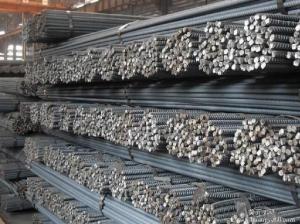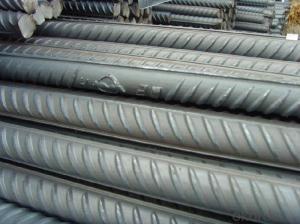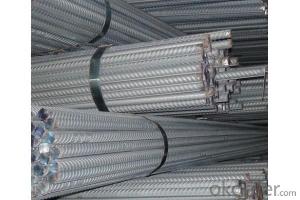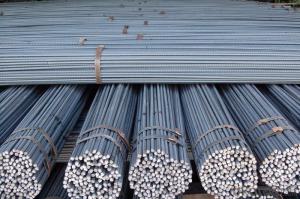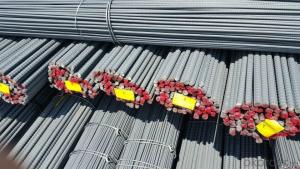Steel Reinforcing Rebars in Hign Quality
- Loading Port:
- China main port
- Payment Terms:
- TT OR LC
- Min Order Qty:
- 100 m.t.
- Supply Capability:
- 10000 m.t./month
OKorder Service Pledge
OKorder Financial Service
You Might Also Like
Product Description:
OKorder is offering Steel Reinforcing Rebars in Hign Quality at great prices with worldwide shipping. Our supplier is a world-class manufacturer of steel, with our products utilized the world over. OKorder annually supplies products to African, South American and Asian markets. We provide quotations within 24 hours of receiving an inquiry and guarantee competitive prices.
Product Applications:
Steel Reinforcing Rebars in Hign Quality are ideal for structural applications and are widely used in the construction of buildings and bridges, and the manufacturing, petrochemical, and transportation industries.
Product Advantages:
OKorder's Steel Reinforcing Rebars in Hign Quality are durable, strong, and wide variety of sizes.
Main Product Features:
· Premium quality
· Prompt delivery & seaworthy packing (30 days after receiving deposit)
· Can be recycled and reused
· Mill test certification
· Professional Service
· Competitive pricing
Product Specifications:
Manufacture: Hot rolled
Grade: HRB335,HRB400,HRB500
Certificates: ISO, SGS, BV, CIQ
Length: 6m – 12m, as per customer request
Packaging: Export packing, nude packing, bundled
Chemical composition (%): | C | Si | Mn | P | S | Ceq | |||
HRB335 HRBF335 |
0.25 |
0.80 |
1.60 |
0.045 |
0.045 | 0.52 | |||
HRB400 HRBF400 | 0.54 | ||||||||
HRB500 HRBF500 | 0.55 | ||||||||
Mechanical properties | Steel | Rel/ MPa | Rm/ MPa | A/ % | Agt/ % | ||||
≥ | |||||||||
HRB335 HRBF335 | 335 | 455 | 17 |
7.5 | |||||
HRB400 HRBF400 | 400 | 540 | 16 | ||||||
HRB500 HRBF500 | 500 | 630 | 15 | ||||||
FAQ:
Q1: what is the difference between actual weight and theoretical weight?
A1: All the section steel has two weights: actual weight and theoretical weight. Actual weight is the weighing out when the product delivered from the mill. Theoretical weight is calculated by pieces. The invoice can be based on each of them as your request.
Q2: How do we guarantee the quality of our products?
A2: We have established an advanced quality management system which conducts strict quality tests at every step, from raw materials to the final product. At the same time, we provide extensive follow-up service assurances as required.
Q3: How soon can we receive the product after purchase?
A3: Within three days of placing an order, we will arrange production. The normal sizes with the normal grade can be produced within one month. The specific shipping date is dependent upon international and government factors, the delivery to international main port about 45-60days.
Images:
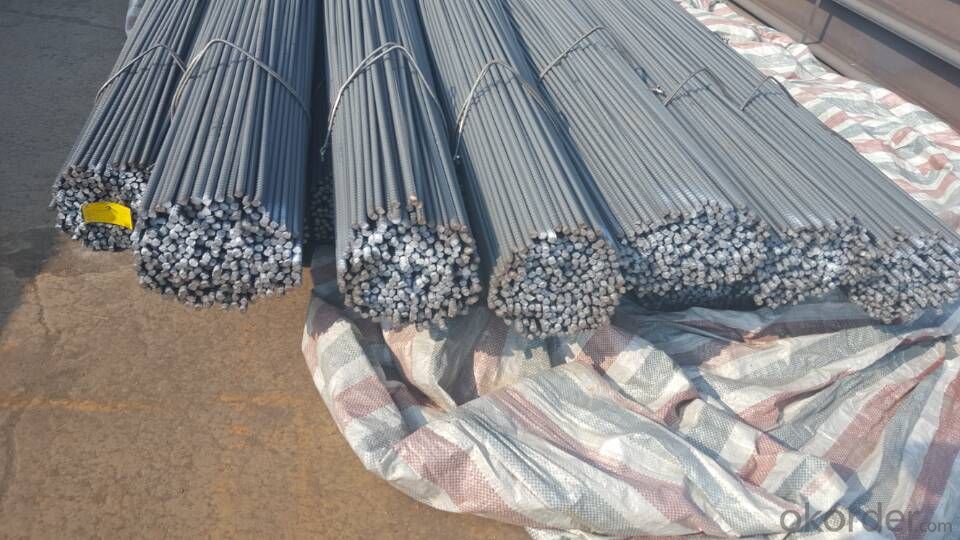
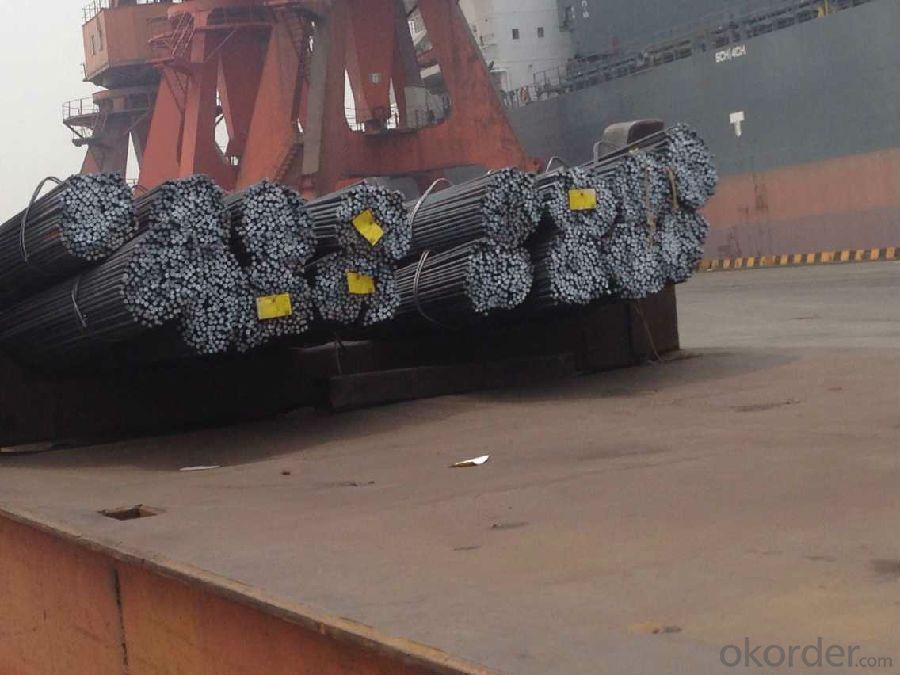
- Q: Are steel rebars easy to work with?
- Steel rebars can be challenging to work with due to their weight and rigidity, but with proper tools and techniques, they can be effectively manipulated and integrated into construction projects.
- Q: What is the thermal expansion coefficient of steel rebars?
- In construction projects, it is crucial to take into account the thermal expansion coefficient of steel rebars to avoid potential problems caused by temperature changes. The coefficient refers to the speed at which the rebars expand or contract. Steel is recognized for its relatively low thermal expansion coefficient, which typically measures around 12 x 10^-6 per degree Celsius. This indicates that with each degree rise in temperature, the length of the steel rebar will expand by roughly 0.000012 times its original length. By considering this factor, we can prevent issues like structural instability and cracking resulting from temperature fluctuations.
- Q: How do steel rebars affect the overall fire resistance of concrete structures?
- Steel rebars can significantly improve the fire resistance of concrete structures. The high thermal conductivity of steel helps in dissipating heat away from the concrete, preventing rapid temperature rise and structural failure. Additionally, the presence of rebars enhances the load-bearing capacity of the structure during a fire, enabling it to withstand the intense heat for a longer duration before collapsing.
- Q: Are steel rebars cost-effective compared to other reinforcement materials?
- Yes, steel rebars are generally considered cost-effective compared to other reinforcement materials. Steel rebars are widely available, have high tensile strength, and are easy to handle and install, making them a popular choice in construction projects. Additionally, steel rebars offer durability, longevity, and resistance to corrosion, which can result in lower maintenance and replacement costs over time compared to alternative reinforcement materials.
- Q: How do steel rebars affect the overall crack width of concrete structures?
- Steel rebars can significantly reduce the overall crack width of concrete structures. By reinforcing the concrete, rebars help distribute and resist tensile forces, preventing cracks from widening or forming in the first place. This reinforcement enhances the structural integrity and durability of the concrete, ensuring it can withstand external loads and environmental factors.
- Q: What are the properties of steel rebars?
- Reinforcing bars, commonly known as steel rebars, play a vital role in reinforced concrete structures due to their essential properties. To begin with, the high tensile strength of steel rebars allows them to endure significant pull forces without fracturing. This characteristic is crucial as concrete has low tensile strength. By combining steel rebars with concrete, a composite material is formed that effectively withstands both tension and compression forces. Furthermore, steel rebars exhibit excellent ductility, which refers to their ability to deform under stress without breaking. This quality is particularly important in areas prone to earthquakes. The ductility of steel rebars enables them to absorb and redistribute energy during seismic activity, enhancing the overall resilience of the reinforced concrete structure. In addition, steel rebars establish a strong bond with concrete due to their ribbed or deformed surface, which increases the contact area between the two materials. This enhanced adhesion prevents slippage or separation when subjected to heavy loads. The bond strength ensures that the steel rebars and concrete work as a cohesive unit, improving the overall structural integrity. Moreover, steel rebars possess corrosion resistance, which is achieved through the use of epoxy or galvanized coatings. Since carbon steel is prone to rusting when exposed to moisture and oxygen, these protective layers prevent corrosion and maintain the longevity and durability of the reinforced concrete structure. Lastly, steel rebars are readily available and cost-effective. As steel is widely used in construction worldwide, rebars are easily accessible in various sizes and grades. The abundance of steel and efficient production processes make steel rebars a cost-effective solution for reinforcing concrete structures. In conclusion, steel rebars offer high tensile strength, excellent ductility, a strong bond with concrete, corrosion resistance, and availability at a reasonable cost. These properties make them an ideal choice for reinforcing concrete structures, ensuring their strength, durability, and resilience.
- Q: How are steel rebars protected against mechanical damage during construction?
- Steel rebars are protected against mechanical damage during construction through a process called bar caging. This involves enclosing the rebars in a wire mesh or steel cage, which acts as a protective barrier and prevents them from being easily damaged or displaced during the construction process. Additionally, rebars can also be covered with plastic sleeves or caps to provide an extra layer of protection.
- Q: What are the different corrosion protection methods for steel rebars?
- There are several corrosion protection methods available for steel rebars, which are commonly used in reinforced concrete structures. These methods aim to prevent or minimize the corrosion of the steel rebars, as corrosion can significantly weaken the overall structure. 1. Concrete Cover: The most common corrosion protection method is providing an adequate thickness of concrete cover over the steel rebars. The concrete acts as a physical barrier, preventing exposure of the rebars to corrosive elements. 2. Galvanization: Galvanizing involves coating the steel rebars with a layer of zinc. This protective layer acts as a sacrificial anode, corroding before the steel rebars. Galvanization significantly enhances the rebars' resistance to corrosion. 3. Epoxy Coating: Epoxy coating is a popular corrosion protection method where a layer of epoxy resin is applied over the steel rebars. The epoxy acts as a barrier, preventing moisture and corrosive substances from reaching the rebars. 4. Cathodic Protection: Cathodic protection is an electrochemical method that involves the application of a sacrificial anode or an impressed current system. In a sacrificial anode system, a more reactive metal, such as zinc or magnesium, is connected to the steel rebars, sacrificing itself and preventing corrosion. In an impressed current system, an external power source is used to provide a protective current to the rebars, preventing corrosion. 5. Corrosion Inhibitors: Corrosion inhibitors are chemicals added to the concrete mix or applied as a surface treatment to the rebars. These inhibitors form a protective film on the rebars' surface, preventing corrosion by blocking the access of corrosive agents. 6. Stainless Steel Rebars: Using stainless steel rebars is an effective corrosion protection method. Stainless steel has a high resistance to corrosion, making it suitable for structures exposed to aggressive environments. It is important to note that the selection of the appropriate corrosion protection method depends on various factors, including the environmental conditions, expected service life of the structure, and cost considerations. Additionally, regular inspection and maintenance of the corrosion protection system are essential to ensure its effectiveness over time.
- Q: How do steel rebars affect the overall crack resistance of concrete structures?
- The crack resistance of concrete structures is greatly improved by steel rebars, which have a crucial role to play. When embedded in concrete, rebars provide reinforcement and boost the tensile strength of the structure. While concrete is naturally strong in compression, it is weak in tension, and rebars help overcome this weakness by absorbing the tensile forces that may result in cracks. The inclusion of rebars in concrete structures allows for stress redistribution, thereby preventing cracks from spreading. As concrete shrinks or experiences external loads, rebars act as a reinforcement grid, effectively resisting the formation and expansion of cracks. By absorbing and dispersing the tensile stresses, rebars ensure that the concrete remains intact and can withstand heavier loads without significant cracking. Furthermore, steel rebars contribute to the overall durability of concrete structures. When rebars corrode due to exposure to moisture or other environmental factors, they can increase in volume, resulting in internal pressure and potential cracking of the concrete. However, the use of corrosion-resistant rebars, such as epoxy-coated or stainless steel rebars, can greatly reduce this risk and enhance the crack resistance of the structure. To summarize, steel rebars enhance the crack resistance of concrete structures by providing reinforcement, increasing tensile strength, redistributing stress, and preventing crack propagation. Their presence guarantees that the structure can withstand various types of loads and environmental conditions, ultimately improving the strength and durability of the concrete.
- Q: How are steel rebars bent during construction?
- Steel rebars are bent during construction using specialized tools and equipment. The process involves several steps to ensure the rebars are bent accurately and to the required specifications. First, the rebars are selected based on the design and structural requirements of the project. The rebars are typically made of carbon steel and come in various sizes and lengths. They are usually straight and need to be bent according to the specific shape and dimensions required for the construction. To bend the rebars, construction workers use a bending machine or a hydraulic bender. These machines have a set of rollers or dies that apply pressure to the rebar, bending it into the desired shape. The machine is adjusted to the required angle and radius of the bend. Before bending, the rebars are marked with measurements and reference points to ensure accuracy. The operator places the rebar into the bending machine, aligning it with the reference points. The machine is then activated, and the rollers or dies apply force to the rebar, gradually bending it to the desired shape. For complex bends or shapes, multiple bends may be required. In such cases, the rebar is bent incrementally, with the operator adjusting the machine after each bend to achieve the desired shape. It is important to note that rebars have specific bending limits to prevent them from breaking or losing their structural integrity. Construction workers must adhere to these limits and ensure that the rebars are not over-bent, as it could compromise the strength and safety of the structure. Overall, the process of bending steel rebars during construction involves using specialized equipment, careful measurements, and skilled operators to achieve the required shapes and dimensions for the project.
Send your message to us
Steel Reinforcing Rebars in Hign Quality
- Loading Port:
- China main port
- Payment Terms:
- TT OR LC
- Min Order Qty:
- 100 m.t.
- Supply Capability:
- 10000 m.t./month
OKorder Service Pledge
OKorder Financial Service
Similar products
Hot products
Hot Searches
Related keywords











